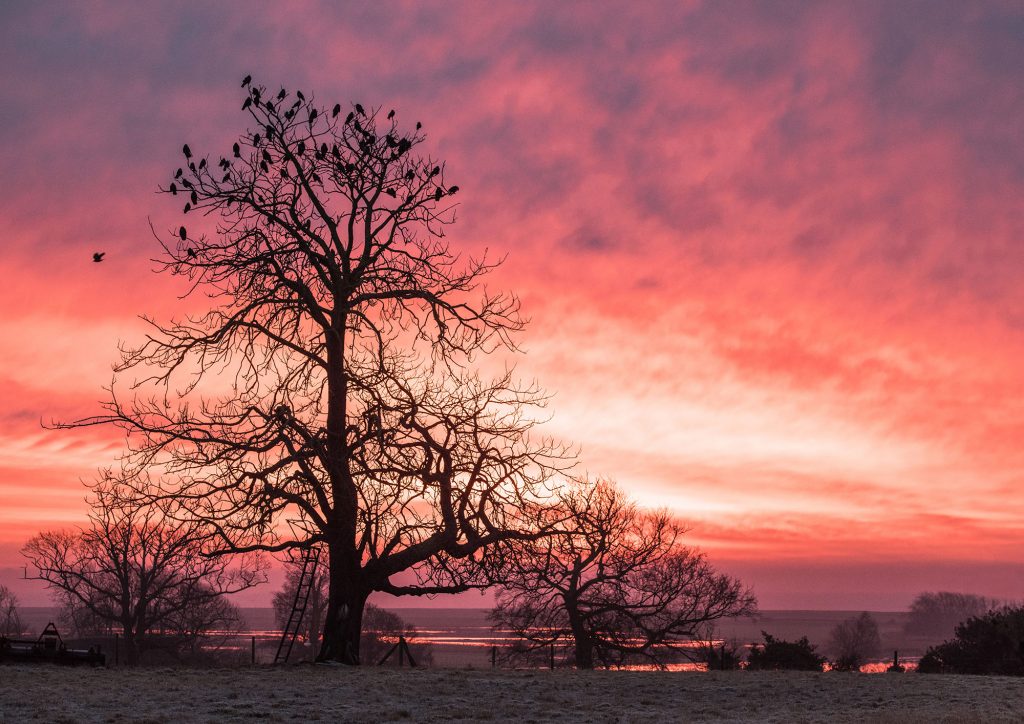The Witness Tree By Gill Moon
In a grassy field on a shallow incline above the marsh stands a horse chestnut tree. An isolated landmark in a purple patchwork of thistles and shrubby mallow. A marker of ancient boundaries, a barometer for the seasons, a witness tree. I walk past it every morning on my way to the river and it has become a familiar and enduring sight. Its gnarly shape and sparse leafage speak of an oldness that I cannot quantify. Unlike the chestnuts that line the edge of the marsh this tree is a ragged specimen. Its unbalanced canopy rises from a patchwork stem partially denuded of bark and bearing a pale oval scar where a limb has been lost. In contrast to the verdant lower growth the uppermost branches stretch out towards the sky, leafless and exposed, a sign of disease, drought or advancing age.
The tree stands alone on the divide between residential land and rural wildness. It is surrounded by an eclectic collection of rusty agricultural metal work, remnants of a bygone age, abandoned and unused. An old wooden ladder with a kinked stem leans against the trunk, a timber stairway to an arboreal world. As I walk past in the soft light of dawn I imagine climbing those rickety rungs to sit in the canopy, legs swinging over the largest horizontal bough, the feel of the cool bark beneath my fingertips and the sound of the birds above my head.
Although it stands isolated in an empty field the tree is rarely alone. Rooks gather to greet the new dawn from its lofty branches, chattering and bickering raucously as the sun rises over the marsh. Their clamour is heartening and their stocky silhouettes add some welcome life to the bare uppermost branches. Occasionally I have seen two little owls bob along on the lower branches, their diminutive and slightly comical form a joy to behold.
In an uncertain world the tree is a reassuring presence, a familiar sight on my morning walk. I often wonder what changes has it presided over and how many more will it witness from its hill above the marsh.
